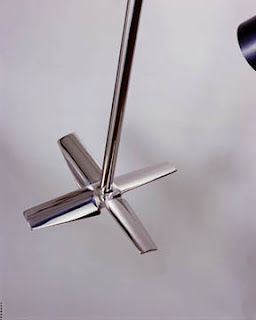 The majority of mixers operate in an "open" tank, or a vessel which is vented to the atmosphere. However, many mixers must operate in a "closed" tank, which requires a seal to contain the contents of the vessel. This may be required for various reason such as a pressure differential within the tank, product toxicity, flammability, environmental reasons, or in the case of side-entering or bottom-entering mixers, simply to stop the product from leaking out of the tank. Mechanical seals are used where very little or no tank emissions are allowed.
The majority of mixers operate in an "open" tank, or a vessel which is vented to the atmosphere. However, many mixers must operate in a "closed" tank, which requires a seal to contain the contents of the vessel. This may be required for various reason such as a pressure differential within the tank, product toxicity, flammability, environmental reasons, or in the case of side-entering or bottom-entering mixers, simply to stop the product from leaking out of the tank. Mechanical seals are used where very little or no tank emissions are allowed.The family of shaft seals known as mechanical seals is the most advanced type of seal used in the mixing industry. They can handle the highest pressures, maintain nearly leak free operation, and require minimum maintenance if installed and operated properly.
Mechanical seals are increasing in popularity due to the growing environmental restrictions regarding leakage from process tanks.
There are hundreds of mechanical seal designs, but they all are variations of a basic layout consisting of a collar mounted on the shaft which usus springs to push a ring (which also rotates with the shaft) against another ring which is held stationary. The rings rotate against each other riding on a thin layer of lubricant, and the springs hold them so tightly together that leakage through the seal is reduced to an immeasurable amount.
The mating surfaces of the rings must be perfectly flat to seal properly, and are manufactured to tolerances measured in "light-bands". The rings must also be extremely hard to endure the pressure and wear, so they are usually mede up of ceramic, carbon, silicon carbide, tungsten carbide or similar material.
The stationary "seat" is held in place and maintains a static seal with the mounting housing using gaskets or o-rings. The rotating elements of the seal must attain a static seal with the shaft using o-rings, wedges or packing.
There is a type of mechanical seal that requires no lubricant. These "dry running" seals use a carbon ring rotating against a harder ring so the carbon ring is that sacrificial part. Any debris shed by the seal can be captured by an optional "debris well", which is flushed during a cleaning cycle. These seals are common in the pharmaceutical industry.
- Jeremy Higginson


